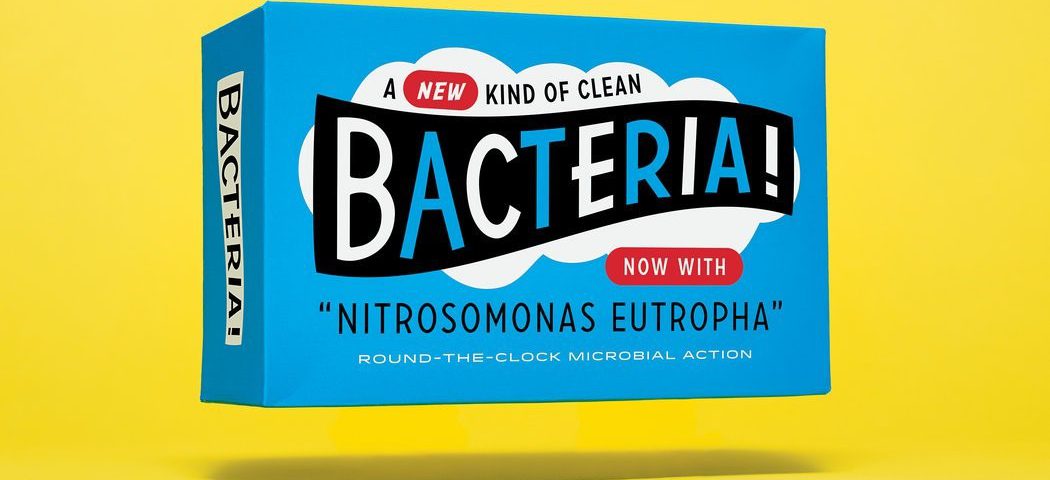THE MICROBIOTA: THE GREAT PARADIGM SHIFT!
Forget all that you know about hygiene! The invisible micro-worlds (microbiome, mycobiome, virome) ruled by bacteria, fungi and viruses, that have long been combatted or ignored in the name of hygiene, are now under the spotlight. These micro-ecosystems, living on and inside us, are a flourishing topic on both a scientific and economic level. During the last two years, publications on microbiota have multiplied, as seen in Cultured, I Contain Multitudes, The Human Superorganism or The Dirt Cure. The message is clear: according to these books, people are healthier when in contact with bacteria. Having evolved in perfect symbiosis with humans over centuries, they are said to stimulate genes, regulate the immune system, interact with emotions and even participate in the development of human cognitive capacities.
REVEALING THE BEAUTY OF MICROBIOLOGY
By tapping into the world of bacteria and microbes, contemporary art and design have helped revert the perception that they are dirty and repulsive. With Navel gazing: portraits of the bacteria in our belly buttons, American artist Joana Ricou collaborated with biologists to transform navel microbiomes into art. Presented at the Nonhuman Subjectivities: The Other Selves exhibition in Berlin (2016), her work was a creative way of explaining that each individual microbiome is unique and part of one’s identity. Meanwhile, English bacteriologist Simon Park used cellulose-producing bacteria to print Charles Darwin’s On the Origin of Species! Displayed at the Edinburgh International Science Festival (2016), this project revealed the endless opportunities bacteria offer: from the creation of colors to molecular and genetic engineering. The Biodesign Challenge gave students, from 24 prestigious American art and design schools, the opportunity to explore the applications of biotech in collaboration with bio-experts. At the end of the semester, the best projects were selected and featured at The Future Will Be Grown exhibit at the School of Visual Arts in New York City (June 2017)
THE MICROBIOME: A NEW ECONOMY
On the economic fields, the microbiome is everywhere. Following the Human Microbiome Project (HMP) initiated by the National Institutes of Health in 2008, the White House announced the launch of the Microbiome Initiative in 2016. $500 million have been invested in the study of the bacterial communities that inhabit all living things: intestines, soils, oceans and the atmosphere. These projects are proof that natural micro-biotic technologies are attracting massive investments, for they will unlock promising innovations for health, energy, fashion and design. In the food industry, probiotics and prebiotics are gaining momentum with a fast-growing market of dietary supplements as well as fermented food and beverages (kombucha, kefir, kimchi, Pu’Erh tea…).
THE FUTURE OF MICROBIOME: BUSINESS IMPLICATIONS FOR THE BEAUTY INDUSTRY
Major brands and suppliers now consider the microbiome as a strategic field of exploration for R&D, scientific innovation and future market developments. In this context, the following ideas will be key:
ADOPT A HOLISTIC VISION OF BEAUTY
Taking the living microbiota into consideration supports a “holistic” approach to health and beauty. It envisions care and well-being as part of a larger process both inside and outside of the body: everything is alive and works together! It suggests new holistic rituals combining F&B or supplement regimes with probiotic cosmetic treatments.
HYGIENE MEANS BALANCE
Formulating micro-biotic cosmetics does not mean having to choose between good or bad bacteria. It means creating and stabilizing more balanced microbiome ecosystems, both inside the body and on the skin. Tomorrow’s cosmetic innovations will have to focus on solutions involving probiotic formulas or prebiotic ingredients that foster balanced bacterial ecosystems and apply selective cleansing principles. One could imagine they would help restoring balanced skin affected by repeated treatments and layering rituals in Asia!
COMBINE NATURAL & MICROBIOTIC INGREDIENTS
As ecological concerns continue to rise, natural ingredients with high levels of probiotics (like the Italian vegetable puntarella) and prebiotics (Yacon which is said to have one of the highest concentration of all plants) represent fantastic opportunities. These “green formulas” will also require appropriate natural and sustainable preservatives.

